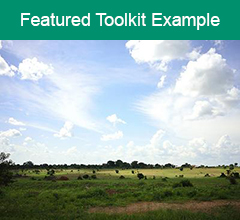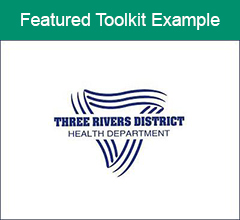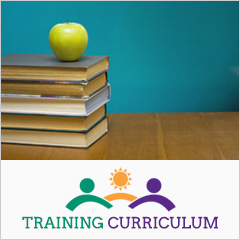This toolkit provides guidance for increasing participation and engaging stakeholders in change efforts.
- Determine why you need or want other people to get involved. Some possibilities may include:
- As objectives are achieved, the organization has chosen to broaden its goals, which will require additional membership support.
- Those who could benefit most from your effort are not currently participating.
- The group's membership does not include representation from key sectors and those individuals who can provide crucial insight into planning appropriate interventions.
- The effort is not publicly visible or supported in the community and expanding the membership base will bring about greater community and/or political support.
- The organization or group lacks members with specific knowledge, relationships, or experience (e.g., fundraising) needed to accomplish its goals.
- You do not currently have enough participants to carry out the legwork involved with action planning steps.
What are the reasons your organization wants or needs additional members?
Related resource:
Encouraging Involvement in Community Work
- Identify those who need to be involved in order to accomplish your group's objectives or specific projects. (These are often the people suggested by Step 1.)
- Review potential participants and partners:
- Who in the community that you are serving can most benefit if they were to participate?
- Who in the community can be most effective in bringing about the vision and mission?
- What roles are currently unfilled or need to be created and who might best fill them?
- Where would these new members be found?
- Why would you choose one or the other individual or organization? What additional resources would they bring to the initiative?
- When is the right time for them to be recruited or join the effort?
- How should they be involved in the group's planning and activities?
- What potential barriers exist to recruiting these new partners, and what strategies can help overcome those barriers to their involvement?
- How many members do you want involved? Should there be a membership target?
- Is there anyone that the group would turn away if they wanted to be involved, and why? How might involving members of other organizations enhance or conflict with your goals?
Related resources:
Recruiting and Training Volunteers
Developing a Plan for Increasing Participation in Community Action
Identifying Targets and Agents of Change: Who Can Benefit and Who Can Help
- Plan to recruit participants and members from diverse backgrounds and viewpoints:
- Include diverse groups (e.g., culture, age, income) at the inception of the initiative or project. What groups are missing currently?
- Organize your group or effort in such a way that all participants and members have equal power and responsibility. What changes can you make to distribute power and responsibility more evenly?
- Make diversity and community representation of those affected by the issue or problem a priority in future recruitment and outreach efforts. Who will take responsibility ensure diversity and community representation among members, and how can they be supported?
- Recognize the experience of community members and the credibility their involvement lends to the effort. What kinds of knowledge and experience do community members have that could benefit your organization and its efforts?
Related resources:
Developing a Plan for Increasing Participation in Community Action
Promoting Participation Among Diverse Groups
- Review representation from different sectors of the community as way to identify who should be involved and who is not. Consider representation from different sectors, including:
- Social institutions (e.g., public and private schools, businesses, media, government).
- Other community organizations (e.g., clinics and hospitals, housing and transportation authorities, neighborhood associations, parent-teacher organizations, professional groups, social service agencies, faith communities).
- Specialized groups - organizations specifically oriented around issues central to your group's vision and mission.
- Individual leaders and citizens - recruit those in the community with particular influence and/or commitment to your group's mission and objectives.
What sectors are currently not represented or underrepresented that could substantially help your organization accomplish its goals?
Related resources:
Developing a Plan for Increasing Participation in Community Action
Promoting Participation Among Diverse Groups
Using Community Sectors to Reach Targets and Agents of Changes
- After considering your personal contacts, find other specific people or organizations to involve though such sources as:
- Area phone directories
- Local community guides
- Community home pages on the internet/world wide web
- Lists of health and human service agencies (e.g., the local United Way may probe a good starting point)
- Directories of community organizations or associations - might be found at an area library .
- Local or community newspaper - provides information on who is already doing what in the area.
After reviewing sources, what additional persons or organizations did you identify as possible new members?
Related resources:
Developing a Plan for Increasing Participation in Community Action
Promoting Participation Among Diverse Groups
- Create conditions that will allow the greatest diversity of people and organizations to participate. Consider how each potential barrier will be addressed:
- Language (e.g., conduct the meeting in the language of the majority and provide interpreters for additional languages used by participants).
- Child care (e.g., offer child care services at group functions).
- Transportation (e.g., initiate creative transportation solutions for those without easy access to meeting places, such as community vans or car pools).
- Time (e.g., be considerate of members' time commitments to their families and other responsibilities by asking them about preferred meeting times and by beginning and ending meetings on time).
- Hospitality or welcoming atmosphere (e.g., provide refreshments or a meal if the meetings occur over meal times, introduce new members and plan social activities to encourage members to get to know each other personally).
What barriers are present that may limit who is participating and how can they be removed?
Related resources:
Methods of Contacting Potential Participants
Promoting Participation Among Diverse Groups
Modifying Access, Barriers, and Opportunities
- Review potential participants and partners:
- Reach out to those who can benefit and contribute (those we most want to involve) through people who can connect with and persuade others.
- Indicate those "connectors" (people who link others) who may be particularly helpful in reaching or connecting with potential participants and members.
- Identify the "persuaders" who may be able to convince people to participate through their credibility and standing in the potential participant's community.
Related resources:
Identifying Targets and Agents of Change: Who Can Benefit and Who Can Help
Using Outreach to Increase Access
Using Community Sectors to Reach Targets and Agents of Changes
Involving Key Influentials in the Initiative
- Indicate core components of the effort to encourage participation and involvement, including:
- Communicating "sticky" messages (ones people remember) about the desired behavior including:
- Credible content and source (e.g., testimonial by someone like me, celebrity, or person in authority)
- Images that convey the appropriate tone (e.g., serious, humorous, friendly)
- Memorable sayings (e.g., "Be part of the community - get involved") and narrative stories (e.g., about why this was important to particular people and communities)
- Specific prompts about participation and involvement to be sought (e.g., be clear about what people could do and when)
- How involvement fits with the circumstances of people's lives (i.e., how it is compatible with people's available time, the places where they live and work, and the situations they experience)
- How this minimizes time and effort (i.e., how the time and cost is acceptable)
- How participation results in positive consequences (e.g., increased social approval from peers)
- Making the participation and involvement more rewarding or attractive by increasing available positive reinforcement (e.g., using media campaigns to show how participation led to benefits valued by friends and family; holding honoring ceremonies for those who contribute). What reinforcements for involvement in your organization can you identify and how might you assure them?
- Making participation easier or of lower cost (i.e., modifying access, barriers and opportunities; e.g., having meetings at convenient times, providing translators and child care as needed). What would make it easier for people to participate in your organization's efforts?
- Improving peoples' abilities to be involved (e.g., providing information, skill training, and support for participants and members). What skills and supports are current members able to provide to encourage new people to get involved?
Related resources:
Providing Information and Enhancing Skills
Communicating Information About Community Health and Development Issues
Providing Incentives for Staff and Volunteers
Honoring Community Champions
Modifying Access, Barriers, and Opportunities
Developing a Plan for Communication
Using Personal Testimony
- Communicating "sticky" messages (ones people remember) about the desired behavior including:
- Use particular sources and influential persons and organizations to reach the specific groups you hope to involve
- Indicate the particular sources of information that will be used to influence particular subgroups (i.e., people trust messages that come from others who are similar in age, ethnicity, etc.) What sources of information may be most likely to reach those you want to involve?
- Indicate how the particular channels of influence will be used to reach distinct populations (e.g., African Americans and Hispanics might be reached through church bulletins in their traditional faith communities). Indicate all those that will be used for person-to-person, small group or media communications including:
- Informal networks and naturally occurring groups (e.g., those in faith communities, support groups)
- Public and non-profit organizations (e.g., health and human service agencies, libraries)
- Professional associations and groups (e.g., teachers' associations, labor unions)
- Businesses (e.g., theaters, convenience stores, beauty salons, bars)
- Point-of-purchase/activity materials (e.g., signs, displays, "take one" handouts)
- Community events (e.g., soccer games, arts festivals)
- Direct and electronic mail (e.g., bill stuffers, Internet/E-mail)
- Print materials (e.g., brochures, fact sheets, newsletters, posters, flyers)
- Print media (e.g., newspapers, daily and weekly)
- Outdoor media (e.g., billboards, transit ads)
- Broadcast media (e.g., television, radio)
- Telephone directories (e.g., Yellow pages)
What channels would make it most likely that you reach those you wish to involve?
Related resources:
Developing a Plan for Communication
Involving Key Influentials in the Initiative
Using Community Sectors to Reach Targets and Agents of Changes
Using E-Mail Lists
Using Direct Mail
Creating Newsletters
Creating Posters and Flyers
Creating Brochures
Preparing Guest Columns and Editorials
Creating Fact Sheets on Local Issues
Writing Letters to the Editor
Media Advocacy
Preparing Press Releases
Preparing Public Service Announcements
Arranging a Press Conference
Using Paid Advertising
- Create an atmosphere that fosters continued participation by staff and volunteers.
- Ask why people or organizations would want to be involved in your community initiative or organization. Indicate how your initiative or organization will:
- Address issues of genuine concern to the greater community.
- Involve community members and organization in defining and creating solutions to the problem or goal.
- Have a history of success that people will want to be a part of.
- Include a diverse membership with a variety of strengths and resources.
- Make special efforts to welcome new members and new ideas.
How will you promote to others the many positives of being involved in your organization?
Related resources:
Providing Support for Staff and Volunteers
Obtaining Feedback from Constituents: What Changes are Important and Feasible?
Participatory Approaches to Planning Community Interventions
Promoting Participation Among Diverse Groups
Methods of Contacting Potential Participants
Making Personal Contact with Potential Participants
- Indicate how the crucial "6R" qualities will be incorporated into the group's meetings and activities to keep people involved and contributing to the organization. These should include:
- Recognition - People want to be recognized for their contributions.
- Respect - People want their values, culture, ideas, and time to be respected and considered in the organization's activities.
- Role - People want a clearly meaningful role in the coalition that makes them feel valuable and in which they can make a contribution.
- Relationships - People want the opportunity to establish and build networks both professionally and personally for greater influence and enjoyment.
- Reward - People expect the rewards of participating in a collaborative partnership to outweigh the costs and to benefit from the relationships established.
- Results - People respond to visible results that are clearly linked to outcomes that are important to them and that they can clearly link to their participation in the coalition.
What changes can be made in the way your organization holds meetings and activities that will incorporate the "6R"s and encourage continued involvement.
- Explain how you will encourage community ownership and cultivate the credibility of the initiative or organization within the community
Related resources:
Rewarding Accomplishments
- Ask why people or organizations would want to be involved in your community initiative or organization. Indicate how your initiative or organization will:
- Plan for involving new generations of people and organizations.
- Identify changing conditions and future developments that could change those who might benefit and contribute to the work. Who might be most affected by changing conditions and developments in your community in the future?
- Indicate how new generations of people will be encouraged to participate. Who will identify and involve them in your organization's efforts?
Related resources:
Encouraging Leadership Development Across the Lifespan
- Assess whether the participation plan is effective and make needed adjustments.
- Specify what success would look like (and how we would know it) for:
- Participation from those who would most benefit (e.g. reaching 80% of those experiencing the issue or problem).
- Involvement from those who could contribute (e.g., active participation by 40 community members).
What would success look like?
Will the current participation plan result in your vision of success? If not, why not?
- Indicate potential adjustments to address key issues in participation and involvement. Some possible issues may include:
- Too few people participating.
- Insufficient diversity.
- Needed assets and relationships are missing.
What adjustments (if any) still need to be made to involve those you want or need in your organization?
Related resources:
Developing a Plan for Increasing Participation in Community Action
- Specify what success would look like (and how we would know it) for:







